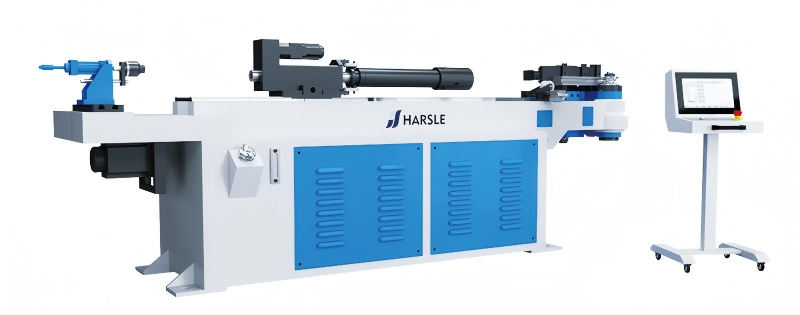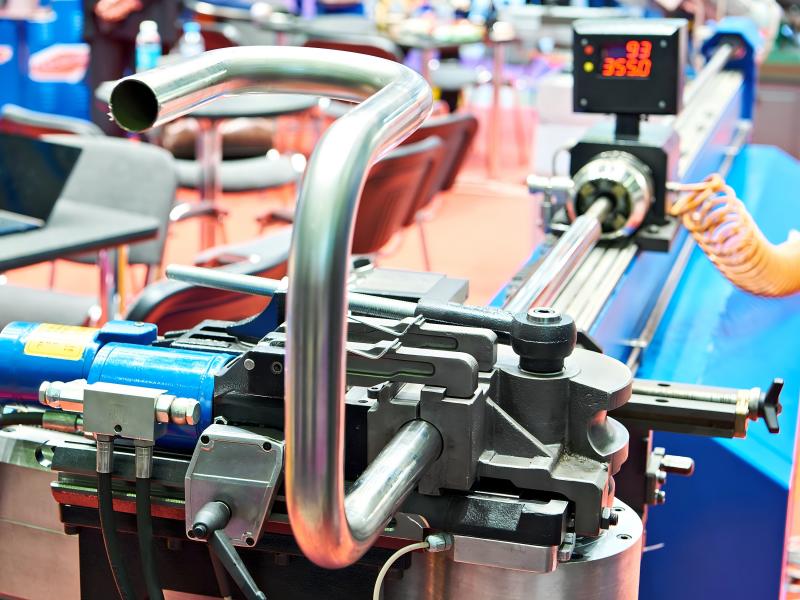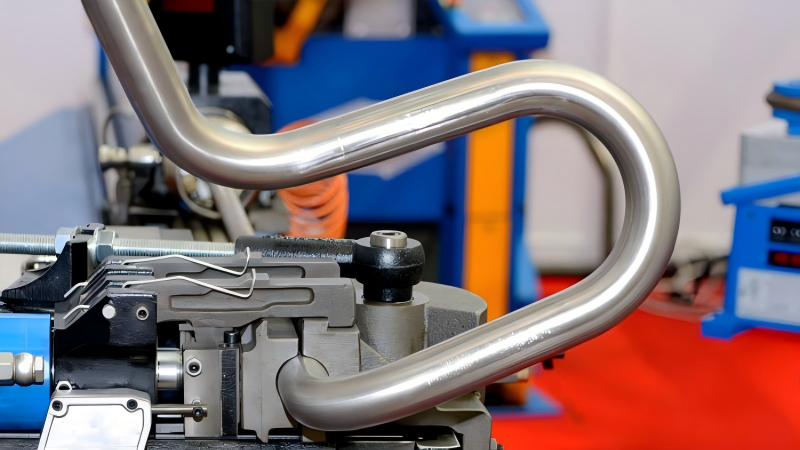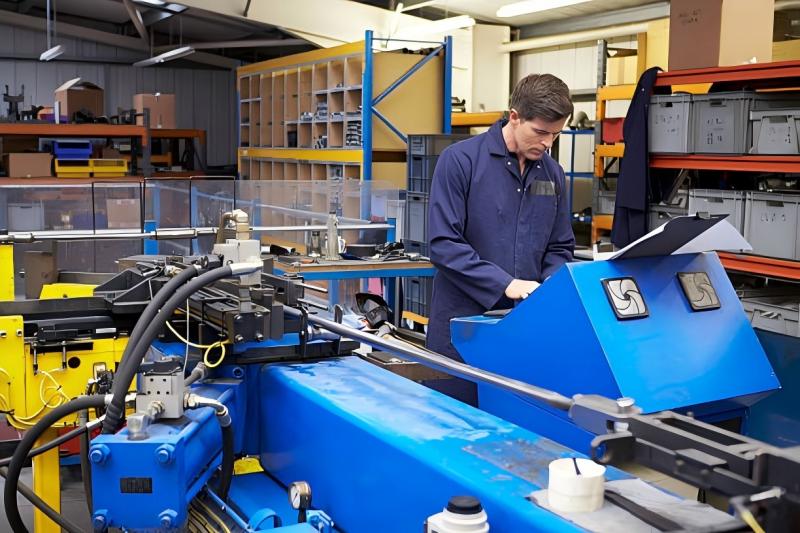Centre de documentation
Manuels et guides techniques complets pour vous aider à maîtriser les machines HARSLE et à optimiser votre efficacité dans le travail des métaux
Le retour sur investissement d'une cintreuse de tubes CNC vaut-il l'investissement ?
CNC Tube Bender ROI is one of the key questions that every modern manufacturer considers when deciding whether the investment is truly worth it. For many businesses aiming to boost production efficiency and control operational costs, understanding the return on investment is essential. In this article, I’ll explain how to accurately assess the ROI of a CNC tube bender by analyzing productivity gains, precision improvements, maintenance savings, and long-term performance benefits. Whether you’re running a small workshop or managing a large-scale metal fabrication plant, this guide will help you make a confident and strategic investment decision.
Compréhension Cintreuse de tubes CNC ROI

UN cintreuse de tubes CNC is designed to automate and precisely control tube bending operations, offering higher speed, accuracy, and consistency compared to manual or semi-automatic machines. Evaluating its ROI involves looking beyond the initial purchase price and understanding how it affects your overall production cost per part, labor efficiency, and material waste reduction.
How ROI Is Calculated in Tube Bending
Le return on investment (ROI) can be calculated using this simple formula:
ROI = (Net Profit from Investment / Cost of Investment) × 100%
In tube bending, this means comparing the profits generated from improved output, reduced rework, and lower labor costs against the cost of purchasing, installing, and maintaining the CNC bender.
Factors That Influence Cintreuse de tubes CNC ROI

Several factors affect how quickly you can recover your investment:
- Volume de production : The more parts you produce, the faster the return. High-volume manufacturers benefit most from automation.
- Économies de main-d'œuvre : One skilled operator can manage multiple bending operations with minimal manual adjustments.
- Accuracy and Repeatability: Reduced scrap and fewer rejected parts directly boost profitability.
- Efficacité énergétique : Modern CNC benders use servo motors and intelligent systems that consume less power.
- Maintenance Costs: CNC systems require less frequent manual intervention and are easier to diagnose using built-in sensors.
Productivity Gains with CNC Tube Benders
Cycles de pliage plus rapides

Traditional bending machines often require manual setup and adjustment, leading to downtime between production batches. A cintreuse de tubes CNC can store multiple programs, allowing you to switch from one job to another almost instantly. This reduces idle time and keeps production flowing smoothly.
Reduced Scrap and Rework
CNC control ensures precise bending angles and radii every time, even for complex multi-plane bends. With manual bending, small errors can lead to costly rework or material loss. Over time, minimizing waste contributes significantly to your CNC Tube Bender ROI.
Consistent Quality for Repeat Orders
If you serve industries like automotive, aerospace, or HVAC, consistency is critical. CNC tube benders ensure identical bends across thousands of parts, which enhances customer satisfaction and helps maintain long-term contracts.
Cost Efficiency and Labor Optimization
Lower Operator Skill Requirement

Manual bending requires a high level of skill and experience to achieve accuracy. In contrast, CNC machines allow even moderately trained operators to achieve professional results by following pre-programmed instructions. This reduces training time and dependence on expert operators.
Multi-Shift Operation and Automation Integration
CNC benders can easily be integrated into automated production lines or robot-assisted systems. They can run multiple shifts with minimal supervision, dramatically improving the machine’s productivity and overall return on investment.
Predictable Maintenance Costs
With built-in diagnostics, automatic lubrication systems, and real-time performance monitoring, modern CNC tube benders help prevent breakdowns. This predictive maintenance approach keeps your machine running smoothly and extends its lifespan.
Comparing CNC Tube Bender vs. Manual Bender ROI
| Facteur | Cintreuse de tubes CNC | Manual/NC Bender |
|---|---|---|
| Setup Time | 1–2 minutes | 10–30 minutes |
| Précision | ±0.1° | ±1° |
| Scrap Rate | <1% | 5–10% |
| Operator Skill | Modéré | High |
| Productivité | High (continuous) | Modéré |
| Efficacité énergétique | High | Medium |
From this comparison, it’s clear that while a CNC tube bender requires a higher initial investment, it delivers significantly better results in terms of productivity, precision, and consistency — all of which lead to a faster ROI.
Real-World Example: ROI in Tube Fabrication

Let’s consider a shop producing 2,000 bent tubes per month using manual machines. After switching to a CNC bender:
- Labor hours drop by 40%.
- Scrap reduction saves $1,000 per month.
- Output increases by 25%.
- The machine pays for itself in less than 18 months.
This scenario shows how the CNC Tube Bender ROI becomes evident through measurable gains in efficiency and reduced waste.
FAQ
How long does it take to see ROI from a CNC tube bender?
Most fabricators recover their investment within 12–24 months, depending on production volume and labor cost savings.
Is a CNC tube bender suitable for low-volume production?
Yes, especially if your projects require frequent setup changes or complex bending. The machine’s programmability minimizes downtime and ensures precise results even for small batches.
What maintenance costs should I expect?
Regular maintenance costs are minimal. CNC benders mainly require periodic lubrication, software updates, and inspection of wear components like bending dies and clamping systems.
How does automation affect ROI?
Integrating automation such as robotic loading/unloading or online measurement systems further increases throughput and shortens the payback period.
Conclusion
Investing in a cintreuse de tubes CNC is not just about buying a high-tech machine — it’s about improving your entire production process. By enhancing precision, reducing waste, saving labor, and ensuring consistent quality, a CNC tube bender delivers an impressive ROI that continues to grow over time.
If you’re evaluating your options or need expert advice on selecting the right model for your workshop, feel free to contact the HARSLE engineering team. We’ll help you analyze your production needs and guide you toward the best solution for maximum return on your investment.













